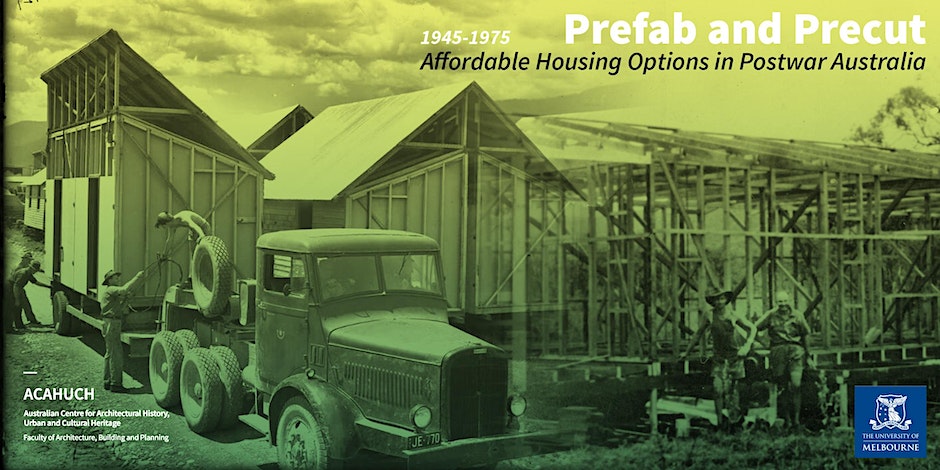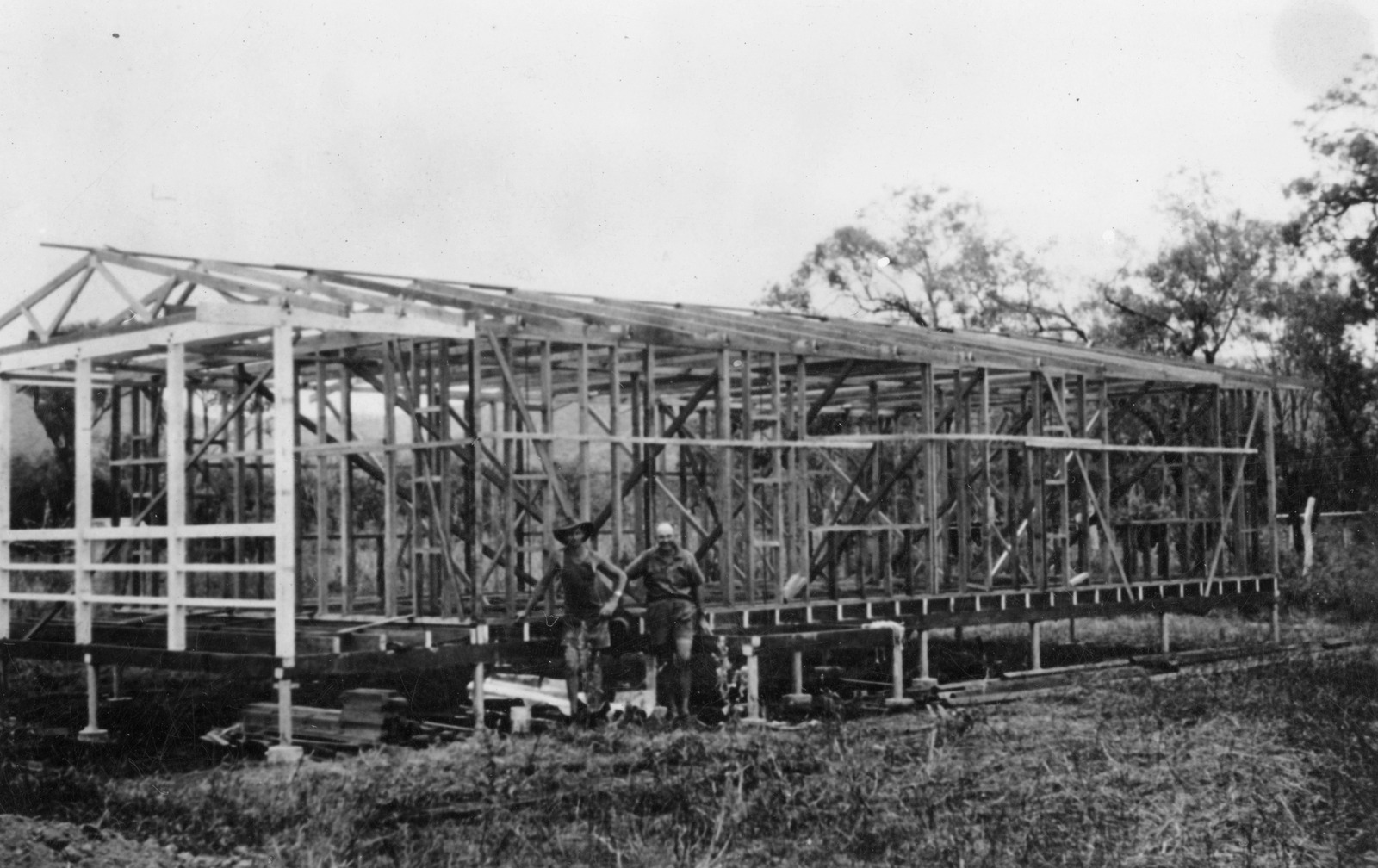ACAHUCH presents Prefab and Precut (1945-1975)

The symposium will be held (in a COVID-19 safe manner) at the University of Melbourne’s Glyn Davis (MSD) Building in the Japanese Room, and also online via zoom.
Prefab and Precut
Affordable Housing Options in Postwar Australia, 1945-1975
The story of housing provision in postwar Australia has frequently been described through accounts of speculative house providers, project home builders and one-off architect-designed houses – stories drawn largely by the private sector’s shaping of market demand and suburban domestic taste. Missing is the story of the search for affordable housing options required in times of special need and unusual demand as Australia’s urban, regional and remote communities grew after World War II. Housing shortages, national and state-based infrastructure projects, social housing, the influx of a migrant labour force, mining and extraction, Cold War defence projects and housing for First Nations peoples were just some of the circumstances that demanded different solutions, often with the caveat of cost control, high production numbers and speed of erection. One tactic to meet these demands was to turn to an alternative method of delivery: the machine-made house, either fully prefabricated or precut as a kit of parts, produced in significant numbers and transported across the country.

Image Source: Prefabricated house, Queensland government funded housing, Hope Valley Mission, far north Queensland, date unknown. Photographer: Ivan Roennfeldt (State Library of Queensland)
At a time when Australia faces an acute shortage of housing across urban, regional and remote communities, it is time to critically reflect on the successes and the failures of the machine-made house in postwar Australia. Hosted by ACAHUCH at the University of Melbourne, Prefab and Precut is a one-day symposium that features papers from scholars and heritage practitioners that address this issue. Invariably modest in scale, carefully planned for solar orientation, and above all conceived with affordability in mind, these houses offer potential lessons on what might be possible for the future of Australian housing. 
Image Source: Prefab houses on transporters - Thornycroft truck and six men, Kiewa, December 1947, (State Electricity Commission of Victoria), (National Library of Australia)
FURTHER INFORMATION
The program of sessions and speakers biographies will be made available later in 2023. Please check back here closer to the date.
VENUE AND REGISTRATION
The symposium will be held (in a COVID-19 safe manner) at the University of Melbourne’s Glyn Davis (MSD) Building in the Japanese Room, and also online via zoom.
CONTACT
The symposium team is Philip Goad and Theo Blankley.
Enquiries | ACAHUCH Coordinator : theo.blankley@unimelb.edu.au